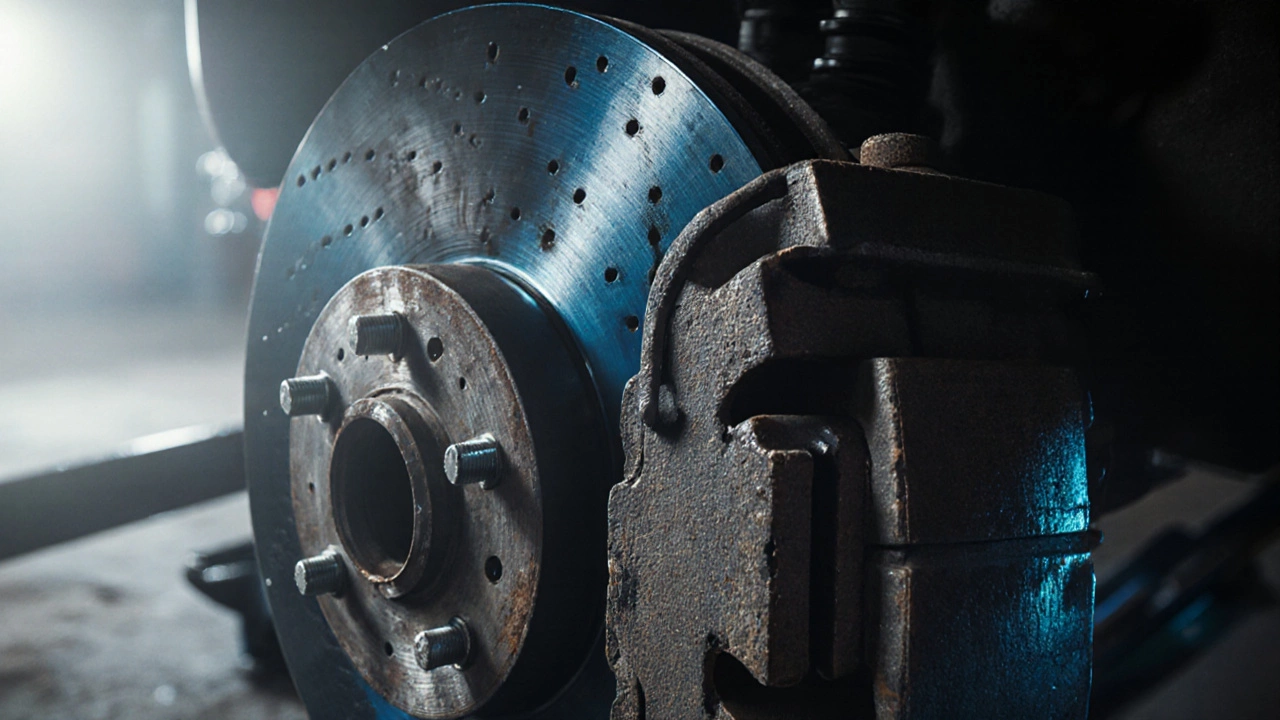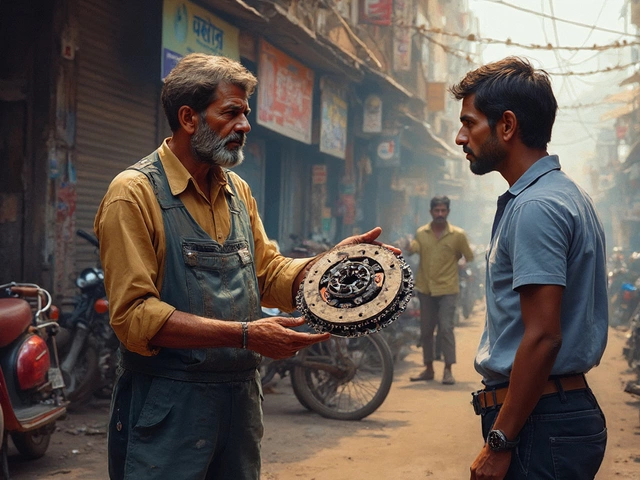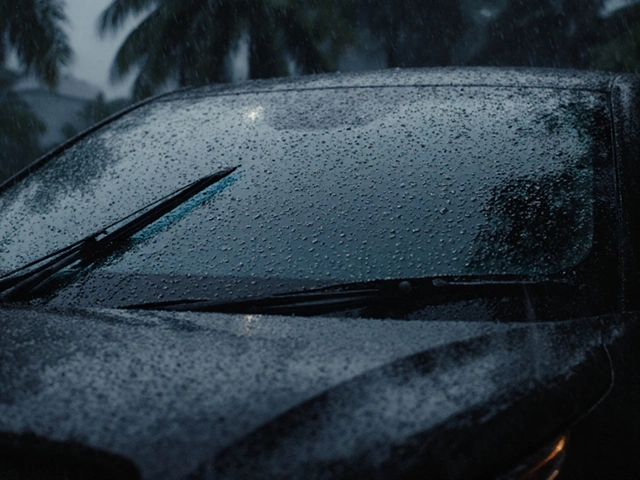Brake Rotor Thickness Checker
Check if your brake rotors are in safe condition to use with new brake pads. Rotors below minimum thickness can cause uneven braking, premature pad wear, and reduced stopping power.
You hear a squeal when you brake. Maybe your car pulls to one side. Or your mechanic says the pads are worn down. So you think: brake pads are cheap-why not just swap them out and call it done? It seems simple. But skipping the rest of the brake system? That’s where things go wrong.
Brake pads don’t work alone
Brake pads are just one part of a system that includes rotors, calipers, fluid, lines, and hardware. When pads wear out, they don’t do it in a vacuum. The rotors they’ve been grinding against for 30,000 miles are likely scored, warped, or thinned. Replacing pads without checking the rotors is like putting new tires on a car with bent rims-it might seem fine at first, but it won’t last, and it won’t be safe.
In Australia, where long highway drives and hilly suburbs like Adelaide’s foothills are common, brakes take a beating. A study by the Royal Automobile Club of South Australia found that 62% of brake repairs done in 2024 involved rotors that were already damaged because pads were replaced without inspection. That’s not an accident-it’s a pattern.
What happens if you only replace brake pads?
Here’s what you’re really doing when you skip the rotors:
- Uneven braking: Old rotors have grooves or uneven surfaces. New pads won’t seat properly, leading to vibrations, pulsing pedals, or pulling to one side.
- Premature pad wear: New pads will wear out 30-50% faster if they’re grinding against a damaged rotor. You’re paying twice for the same job.
- Noisy brakes: Squeaking, grinding, or chirping after a pad swap? That’s often the rotor’s fault, not the pads.
- Reduced stopping power: A warped rotor reduces contact area. That means less friction, longer stopping distances, and more heat buildup-dangerous on steep roads or in heavy traffic.
And don’t forget the calipers. If they’re sticking, your new pads will wear unevenly on one side. If the brake fluid is old or contaminated, your pedal will feel spongy. Replacing pads alone ignores all of this.
When is it OK to just replace brake pads?
There are rare cases where you can get away with just swapping pads. But they’re the exception, not the rule.
You might be safe to replace only the pads if:
- The rotors are still thicker than the manufacturer’s minimum thickness (check your service manual-most are 2.0-2.5mm minimum).
- There’s no visible scoring, warping, or blue discoloration on the rotor surface.
- You’ve recently had a full brake service (within the last 12,000-15,000 km).
- The vehicle has low mileage (under 40,000 km) and the pads were replaced for the first time.
Even then, you should still inspect the rotors. A mechanic can measure them with a micrometer in under five minutes. If they’re within spec and smooth, then yes-new pads alone are fine.
But if you’re unsure? Don’t guess. Get them checked.
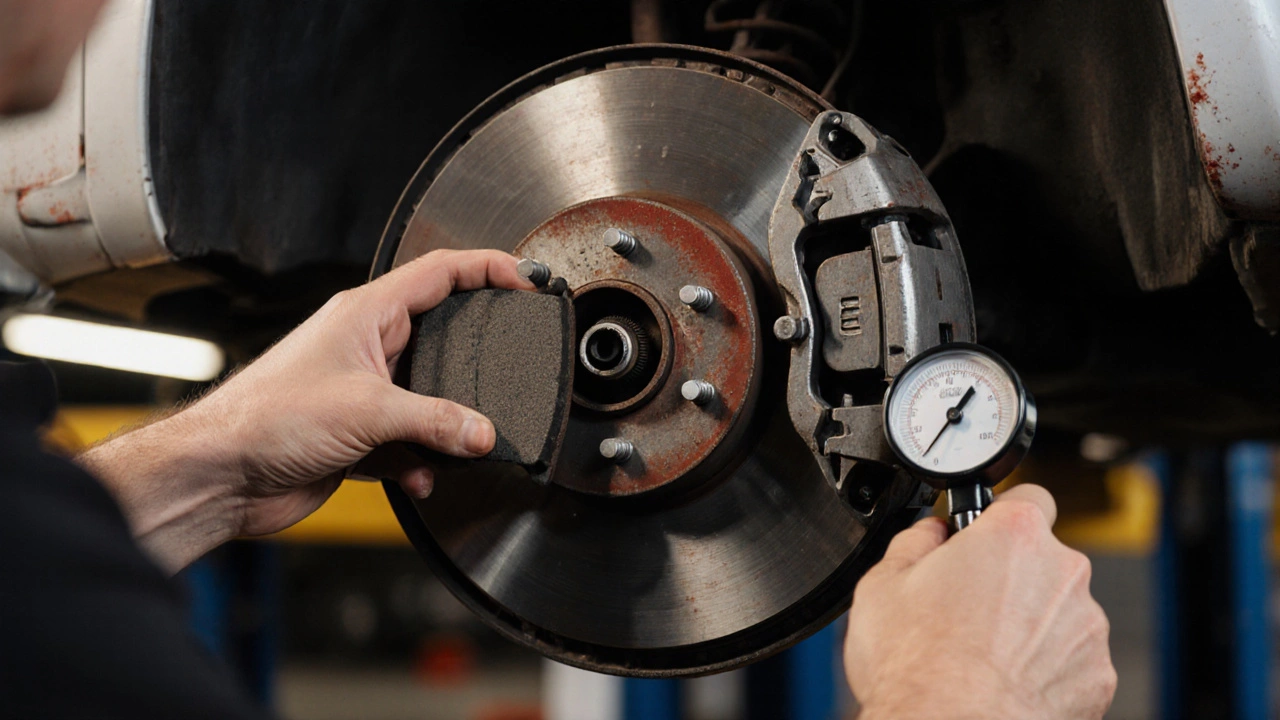
What else should you check when replacing brake pads?
Brake pads are just the tip of the iceberg. Here’s what a proper brake service includes:
- Rotors: Measured for thickness and surface condition. If they’re worn or warped, they should be resurfaced or replaced.
- Calipers: Checked for sticking pistons, leaks, or rust. A seized caliper can cause uneven pad wear and overheating.
- Brake fluid: Fluid absorbs moisture over time. After 2-3 years, it boils at lower temperatures, reducing stopping power. Flush it every 2 years or 40,000 km.
- Hardware: Slide pins, shims, and springs wear out too. Reusing old hardware can cause noise and uneven pad movement.
- Brake lines: Look for cracks, bulges, or corrosion. A failing line can leak fluid suddenly.
Skipping any of these means you’re not fixing the problem-you’re just delaying it.
Cost comparison: Pads only vs. full brake service
Let’s say you drive a 2018 Toyota Corolla in Adelaide. Here’s what you’d pay:
| Service | Cost (AUD) | Expected Lifespan |
|---|---|---|
| Front brake pads only | $180-$250 | 10,000-15,000 km |
| Front pads + rotors | $400-$550 | 40,000-60,000 km |
| Full brake service (pads, rotors, fluid, hardware) | $550-$750 | 60,000+ km |
At first glance, pads-only looks like a $200 saving. But if you’re replacing pads again in 12 months because the rotors ruined them, you’ve spent $450+ instead of $500 for a full job. And you’ve spent that time driving with compromised brakes.
Real-world example: What went wrong
A customer in Glenelg came in with a squealing noise after replacing pads at a discount shop. The pads were new, but the rotors were worn to 1.8mm-below the safe limit. The caliper piston was sticking, so one pad was constantly dragging. The brake fluid hadn’t been changed in 5 years.
They thought they saved money. In reality, they paid $320 for a temporary fix, then another $680 to fix everything else three months later. Total: $1,000. A full service upfront would’ve cost $650.
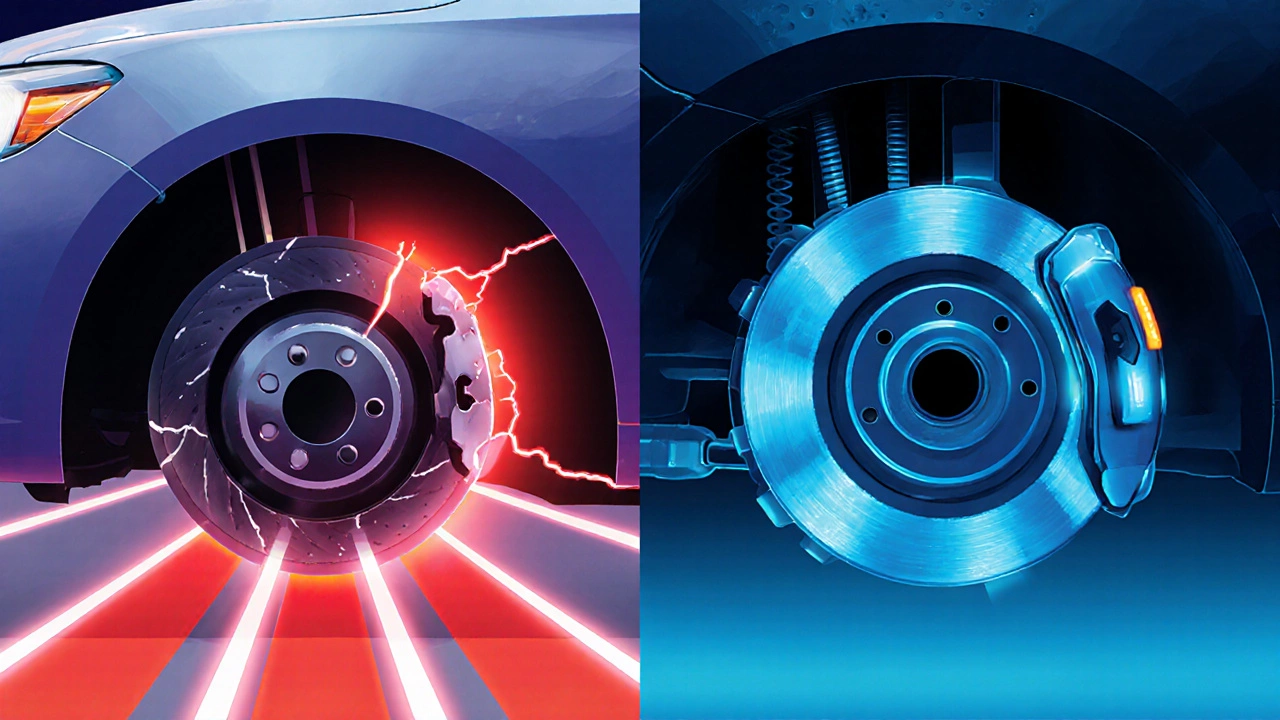
How to avoid being taken advantage of
Some shops push full brake jobs because they make more money. Others skip rotors because they’re lazy or don’t have the right tools. You need to know what’s right for your car.
Here’s what to ask:
- “What’s the current thickness of my rotors?”
- “Are they below the minimum safe thickness?”
- “Can you show me the wear pattern on the rotors?”
- “When was the brake fluid last flushed?”
If they can’t answer, or if they say “It’s fine” without showing you data, walk out. A trustworthy shop will show you the old parts and explain why they’re being replaced.
Pro tip: Listen to your brakes
Brakes talk. You just have to listen.
- High-pitched squeal: Usually pads wearing thin. Some have wear indicators built in.
- Grinding noise: Metal-on-metal. Rotors are damaged. Stop driving.
- Pulsing pedal: Warped rotors. Not the pads.
- Spongy pedal: Air in the lines or old fluid.
Don’t wait until it’s loud. Get your brakes checked every 15,000 km or once a year-whichever comes first.
Final answer: Should you just replace brake pads?
No-not unless you’ve confirmed the rotors are in perfect condition. Most of the time, you’re just postponing a bigger, more expensive problem.
Brakes are your car’s most critical safety system. Cutting corners here isn’t saving money. It’s risking your life, your passengers’, and others on the road.
Replace pads only when the rest of the system is sound. Otherwise, do it right the first time. It’s cheaper. It’s safer. And you’ll sleep better knowing your brakes won’t fail when you need them most.
Can I replace brake pads myself?
Yes, if you have basic tools and experience. But you still need to inspect the rotors, calipers, and fluid. Don’t skip measuring rotor thickness. A micrometer costs under $30 and can save you hundreds. Also, don’t forget to bleed the brakes after reassembly. Air in the lines is dangerous.
How often do brake pads need replacing?
It depends on driving style and conditions. In city driving with lots of stops, pads last 25,000-40,000 km. On highways or hilly areas like Adelaide’s hills, they may last 50,000-60,000 km. Always check them during oil changes.
Do I need to replace both front and rear pads at the same time?
Not necessarily. Front pads wear faster-often 2-3 times faster than rear ones. Replace them as needed. But if you’re replacing front pads and the rear are close to worn, it’s smart to do both at once. It saves labor costs and ensures balanced braking.
Are cheap brake pads okay?
They’re fine for light driving, but avoid the cheapest options. Low-quality pads wear quickly, create more dust, and can be noisy. Stick with reputable brands like Bendix, Akebono, or TRW. They’re designed to match factory performance and last longer.
What happens if I ignore worn brake pads?
You’ll eventually grind through the pads and start damaging the rotors. That leads to expensive rotor replacement. Worse, you risk brake failure. Metal-on-metal contact reduces stopping power by up to 40%. In an emergency, that’s the difference between stopping safely and crashing.
If you’ve noticed any unusual brake behavior, don’t wait. Get it checked. Your brakes aren’t just a part of your car-they’re your lifeline.
